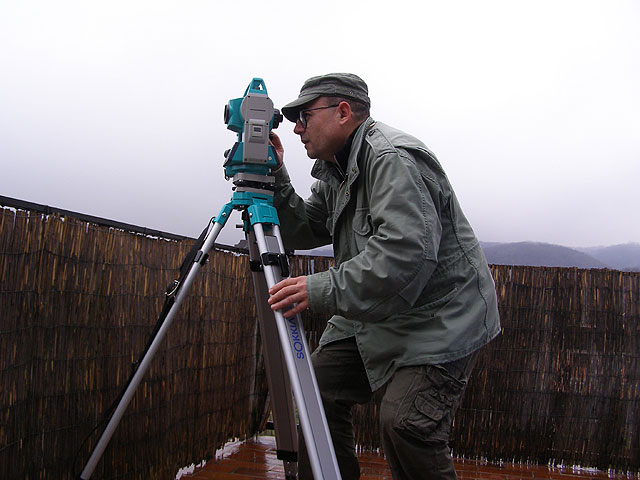Forensic
Ballistics
CV
|

|
|
My
name is Vojin Mastruko. After I graduated as atomic physicist on University
in Zagreb, Croatia, I started my career of forensic scientist as Forensic
Ballistic Expert and Gunshot Residue (GSR) Expert in Forensic Centre in
Zagreb, Croatia as well as Court Expert Witness. During 28 years of
practice, as a forensic expert I gave my expert oppinion in more than 4000
crime cases. After retirement, since 2004. I act as an independent forensic
firearms and toolmarks expert, gunshot residue analysis expert, forensic 3D
reconstructions expert and Court Expert Witness. |
|
Vojin Mastruko
|
I
am a member of Digital Imaging Working Group of European Network of
Forensic Science Institutes (ENFSI) and a member of Forensic SEM discussion
group on Internet moderated by Dr. Dennis Ward from FBI’s Academy in Quantico,
Virginia, where I have daily contacts with forensic scientists all over the
World dealing with forensic application of Scanning Electron Microscope or
Digital Imaging.
On
subject of Gunshot Residue Detection on hands and clothing I wrote a lot of
publications like "Forensic
Application of an ESEM" article for (I.A.M.A.) newsletter dedicated
to Forensic Scientist in the
detection of primer gunshot residue by SEM/EDX.
During
my 28 years of practice as a Ballistic Expert Witness I realized it is hard to
give a verbal explanation during Courtroom session regarding position and
posture of a suspect and a victim in a moment a bullet hit the victim. Visual
tools seem to be much more appropriate to illustrate possible scenarios of the
particular shooting incident. Since 1996. I developed my own technique called
Forensic 3D Reconstruction aiming to show possible shooting scenarios in order
to be able to conclude what might had happened on scene of crime.
The
first Forensic 3D Reconstruction in Croatia had been done in 1995. During the
period from 2007. to 2010. there have been significant development
in Forensic 3D Technology (F3D) in Croatia. In the same period F3D was
adopted in Courts in Croatia and was applied in courtrooms in practically all
major crime cases in Croatia. In my opinion, those crime cases could not have
been resolved without the application of F3D. Development of F3D on one side
manifested in multiple development of more groups and subgroups of F3D and on
the other side it was evident that F3D was not only a visualisation technique,
it became an analitical forensic 3D technology characterized by the use of high
resolution laser 3D scanners, software for postprocessing raw data from scanning
and using photogrammetry techniques and methods. All this made it possible, for
the first time, to detect and correct mistakes done by investigators and
forensic experts on crime scene years after they had finished their survey.
According to authorities in ENFSI Digital Imaging Working Group like Dr. Jurrien
Bijhold and Dr. Zeno Gerards I am one of leading European experts in the field
of Forensic 3D Reconstructions. In 2003. as an invited speaker I gave a
presentation on the subject on conference of ENFSI Forensic Institutes Directors
in Tallinn, Estonia.
In
2007., invited by Dr. Zeno Geradts from Netherlands Forensic Institute, editor
for Engineering Sciences, Multimedia and Digital Evience section, I wrote a
chapter on 3D Reconstruction (Visualisation) for Wiley Encyclopedia of Forensic
Science.
During
the period from 2007. to 2010., as a consequence of collaboration with Zlatan
Novak, geodetic expert and expert for aqisition of spatial data, Forensic 3D
Reconstruction technology had significant development and become not only
visualisation but also forensic analytical technique. Merging of Forensic 3D
Reconstruction with laser 3D scanning technology led to a new combination with
strong visualisation and analytical potential. While the technology of laser 3D
scanning allows registration of crime scenes and all phisical evidence in
unprecedented quality and speed, Forensic 3D Reconstruction tecnology allows us
to combine all the evidence that physically exists with the imagined simulations
that intend to show what might have happened. Forensic 3D Reconstruction have
been applied to more than 120 court crime cases, mostly homicides and robberies
but also fire and arson cases, as well as other field of application as
preservation and archeology.
In
2010. on meeting of ENFSI Digital Imaging Working Group in Trieste I gave
presentation entitled Application of Laser 3D Scanners for Forensic 3D
Reconstruction of Crime Scenes from Old Police Photographs and together with
Zlatan Novak a workshop on application of laser 3D scanner and Visual Sensor
Fusion-Suspect Measurement software on estimating a suspect's height from
surveillance camera video.
Skills
Base
Proven
leadership on scene of crime survey
Proficiency
Test proven ability for analyst in GSR Lab
Proven
ability in practical application of all methods in ballistic forensic lab
Proven
ability to create forensic 3D animations with animated human 3D characters,
vehicles, fire, smoke and other
28
years experience in giving Courtroom testimony
Languages:
Fluent in English
IT:
Autodesk Maya, Autodesk 3D Sudio MAX, Poser, Adobe Photoshop, Adobe Premiere, MS
Office, Windows
Clean
driving license
References:
Excellent references available upon request.
back
home
